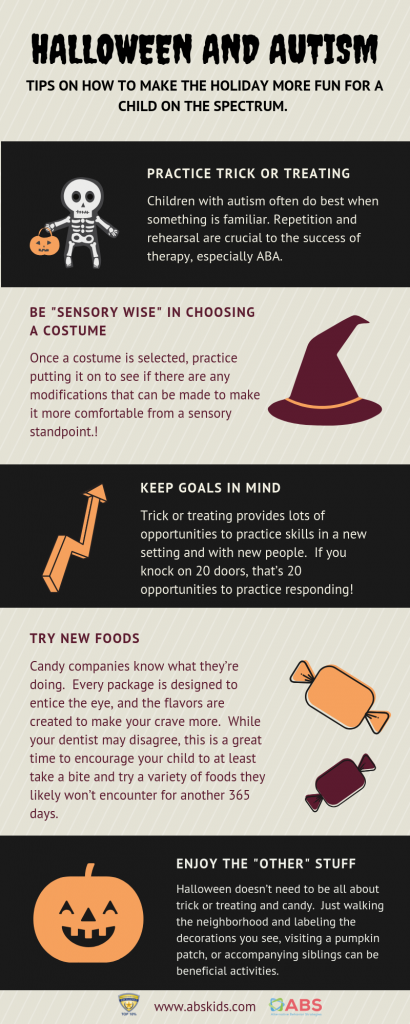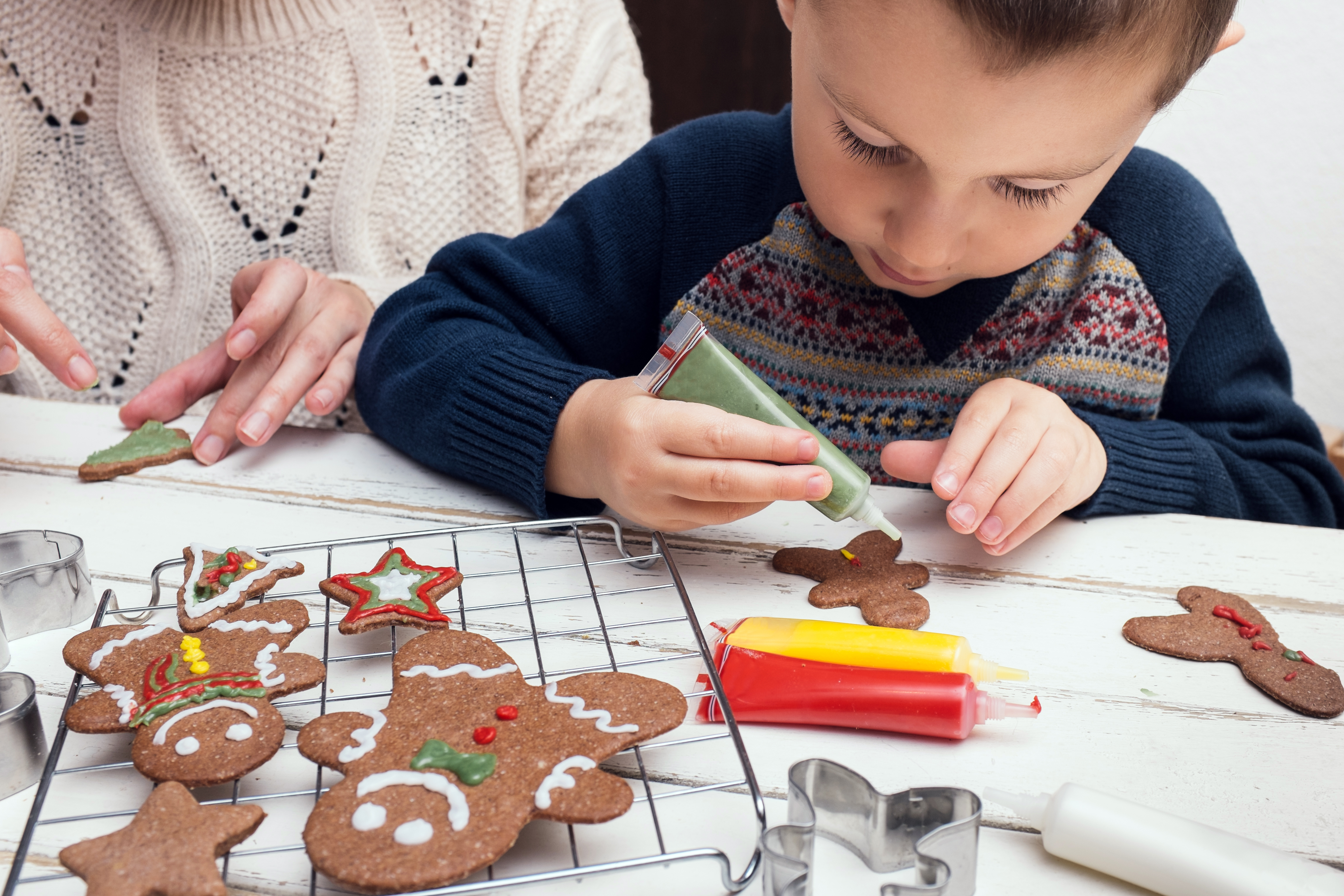Halloween and Autism – Tips On How To Make The Holiday More Fun For a Child On the Spectrum
There are a lot of reasons why Halloween is a favorite holiday for so many individuals: the costumes, the decorations, and definitely the treats! Here are a few tips to help your child have a spooktacular time this October 31st:
Practice
Children with autism are often most comfortable when something is familiar. Repetition and rehearsal are crucial to the success of most autism therapies, and especially ABA. Unfortunately, we don’t always remember or prioritize practicing for events that only occur once or twice a year (like Halloween, dental and medical visits, etc.). Perhaps a friendly neighbor or family member would allow you to do some trick or treating practice. If your child is in an ABA therapy program, you could ask the technician or consultant to help you construct a social story to help them learn the steps involved. You may want to practice specific aspects, such as not walking into the house.
Be “sensory wise” in choosing the costume
It’s a great idea to allow your child to pick their costume if possible. Once a costume is selected, practice putting it on to see if there are any modifications that can be made to make it more comfortable from a sensory standpoint. Cut out itchy tags and run it through the washing machine to soften it up. Don’t be afraid to let your child wear it around for a few days to get used to staying in it! The more comfortable your child is, the more he or she will enjoy the experience!
Keep goals in mind
Trick or treating provides lots of opportunities to practice skills in a new setting and with new people. If you knock on 20 doors, that’s 20 opportunities to practice responding! Consider:
- Choice making when selecting candy from the bowl
- Teaching question asking (e.g., asking peers “What are you?”) and responding to similar questions (e.g., “I’m Batman!”).
- Saying “Thank you,” and, “Goodbye,” for those who are able.
Try new foods
Candy companies know what they’re doing. Every package is designed to entice the eye, and the flavors are created to make you crave more. While your dentist may disagree, this is a great time to encourage your child to at least take a bite and try a variety of foods they likely won’t encounter for another 365 days. And if they don’t like it, no big deal! It was just a load of sugar anyway.
Enjoy the “other” stuff
Halloween doesn’t need to be all about trick or treating and candy. Just walking the neighborhood and labeling the decorations you see, accompanying siblings, or visiting a pumpkin patch can be learning opportunities. Like we said above, these once-a-year events don’t occur enough for children to be instantly comfortable with the whole experience. It may be best to start small, perhaps just knocking on a few doors and then allowing your child to begin eating while walking along with the group. Be flexible and plan for an early exit if needed to avoid the experience turning negative. If the child has a positive experience this year, they are more likely to remember that for next year.

